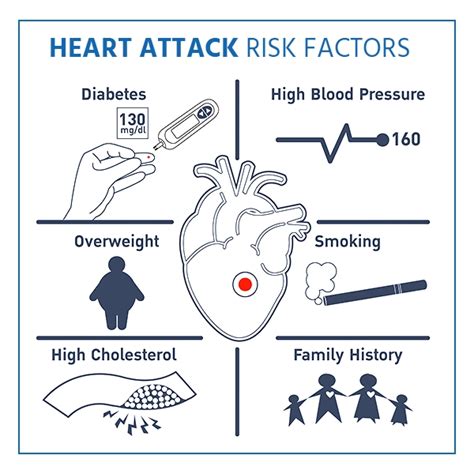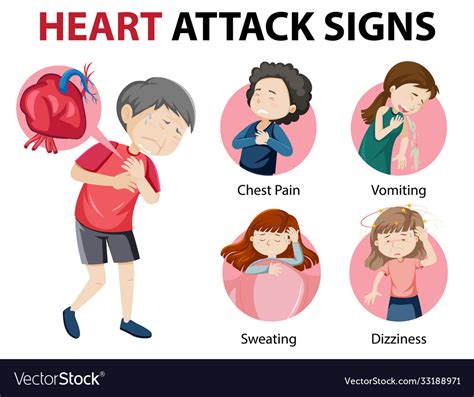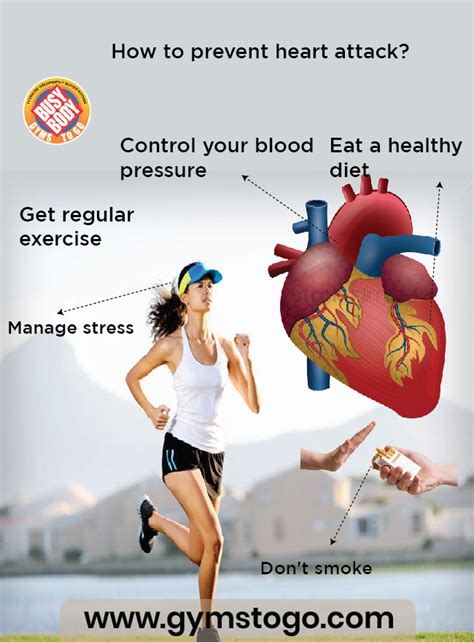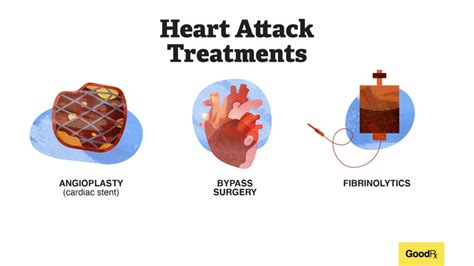Intro
Identify silent heart attack signs before symptoms appear, including chest pain, shortness of breath, and fatigue, to prevent cardiac arrest and promote heart health through early detection and prevention strategies.
A heart attack, also known as a myocardial infarction, is a serious medical condition that occurs when the blood flow to the heart is blocked, causing damage to the heart muscle. It is a leading cause of death and disability worldwide, and it is essential to recognize the symptoms and take preventive measures to reduce the risk of a heart attack. However, it is crucial to understand that a heart attack can occur before symptoms appear, making it vital to be aware of the risk factors and take proactive steps to maintain a healthy heart.
The importance of recognizing the risk factors for a heart attack cannot be overstated. High blood pressure, high cholesterol, smoking, obesity, and diabetes are all significant risk factors that can increase the likelihood of a heart attack. Additionally, a family history of heart disease, lack of physical activity, and a poor diet can also contribute to the risk. By understanding these risk factors, individuals can take steps to mitigate them and reduce their risk of a heart attack.
The consequences of a heart attack can be severe and long-lasting. Damage to the heart muscle can lead to heart failure, arrhythmias, and even death. Furthermore, a heart attack can also lead to emotional and psychological trauma, affecting not only the individual but also their loved ones. Therefore, it is essential to take preventive measures and seek medical attention immediately if symptoms appear.
Understanding Heart Attack Risk Factors

Understanding the risk factors for a heart attack is crucial in preventing and managing the condition. The most significant risk factors include high blood pressure, high cholesterol, smoking, obesity, and diabetes. High blood pressure can damage the blood vessels, making them more susceptible to blockage, while high cholesterol can lead to the buildup of plaque in the arteries, increasing the risk of a blockage. Smoking damages the inner lining of the blood vessels, making them more prone to blockage, and obesity and diabetes can increase the risk of high blood pressure and high cholesterol.
Modifiable Risk Factors
Modifiable risk factors are those that can be changed or controlled through lifestyle modifications or medical interventions. These include: * High blood pressure * High cholesterol * Smoking * Obesity * Diabetes * Lack of physical activity * Poor dietNon-Modifiable Risk Factors
Non-modifiable risk factors are those that cannot be changed or controlled. These include: * Age * Family history of heart disease * GenderRecognizing Heart Attack Symptoms

Recognizing the symptoms of a heart attack is crucial in seeking medical attention promptly. The most common symptoms of a heart attack include:
- Chest pain or discomfort
- Shortness of breath
- Pain or discomfort in the arms, back, neck, jaw, or stomach
- Feeling weak, lightheaded, or faint
- Cold sweats
- Nausea or vomiting
Common Symptoms in Men and Women
While the symptoms of a heart attack can vary between men and women, the most common symptoms in both men and women include chest pain or discomfort, shortness of breath, and pain or discomfort in the arms, back, neck, jaw, or stomach. However, women are more likely to experience shortness of breath, nausea, and vomiting, while men are more likely to experience chest pain.Preventing a Heart Attack Before Symptoms Appear

Preventing a heart attack before symptoms appear requires a proactive approach to maintaining a healthy heart. This can be achieved through:
- Regular exercise
- A healthy diet
- Maintaining a healthy weight
- Managing stress
- Getting enough sleep
- Avoiding smoking and limiting alcohol consumption
- Managing high blood pressure and high cholesterol through medication and lifestyle modifications
Lifestyle Modifications
Lifestyle modifications are essential in preventing a heart attack. These include: * Eating a healthy diet rich in fruits, vegetables, whole grains, and lean proteins * Engaging in regular physical activity, such as walking, running, or swimming * Maintaining a healthy weight through a combination of diet and exercise * Managing stress through relaxation techniques, such as meditation or deep breathing * Getting enough sleep, aiming for 7-8 hours per nightTreatment Options for Heart Attack

Treatment options for a heart attack depend on the severity of the condition and the individual's overall health. The most common treatment options include:
- Medications, such as aspirin, beta blockers, and ACE inhibitors
- Angioplasty and stenting to open blocked arteries
- Coronary artery bypass grafting (CABG) to bypass blocked arteries
- Cardiac rehabilitation to improve heart health and reduce the risk of future heart attacks
Emergency Medical Services
Emergency medical services (EMS) play a critical role in treating a heart attack. EMS providers can administer medications, such as aspirin, and provide oxygen therapy to help reduce the damage to the heart muscle. They can also transport the individual to the hospital quickly and safely, where further treatment can be provided.Recovering from a Heart Attack

Recovering from a heart attack requires a comprehensive approach to rehabilitation. This includes:
- Cardiac rehabilitation to improve heart health and reduce the risk of future heart attacks
- Lifestyle modifications, such as a healthy diet and regular exercise
- Managing stress and getting enough sleep
- Attending follow-up appointments with a healthcare provider to monitor progress and adjust treatment as needed
Cardiac Rehabilitation
Cardiac rehabilitation is a critical component of recovering from a heart attack. It involves a combination of exercise, education, and counseling to improve heart health and reduce the risk of future heart attacks. Cardiac rehabilitation can be provided in a hospital or outpatient setting and typically includes: * Exercise training, such as walking or jogging * Education on healthy eating and lifestyle modifications * Counseling on stress management and smoking cessationWhat are the most common symptoms of a heart attack?
+The most common symptoms of a heart attack include chest pain or discomfort, shortness of breath, and pain or discomfort in the arms, back, neck, jaw, or stomach.
How can I prevent a heart attack before symptoms appear?
+Preventing a heart attack before symptoms appear requires a proactive approach to maintaining a healthy heart, including regular exercise, a healthy diet, managing stress, and getting enough sleep.
What are the treatment options for a heart attack?
+Treatment options for a heart attack depend on the severity of the condition and the individual's overall health, but may include medications, angioplasty and stenting, coronary artery bypass grafting, and cardiac rehabilitation.
In conclusion, a heart attack is a serious medical condition that requires prompt attention and treatment. By understanding the risk factors, recognizing the symptoms, and taking preventive measures, individuals can reduce their risk of a heart attack and improve their overall heart health. If you or someone you know is experiencing symptoms of a heart attack, it is essential to seek medical attention immediately. We encourage you to share this article with others, and to take proactive steps to maintain a healthy heart. By working together, we can reduce the risk of heart attacks and improve the health and well-being of individuals and communities.
